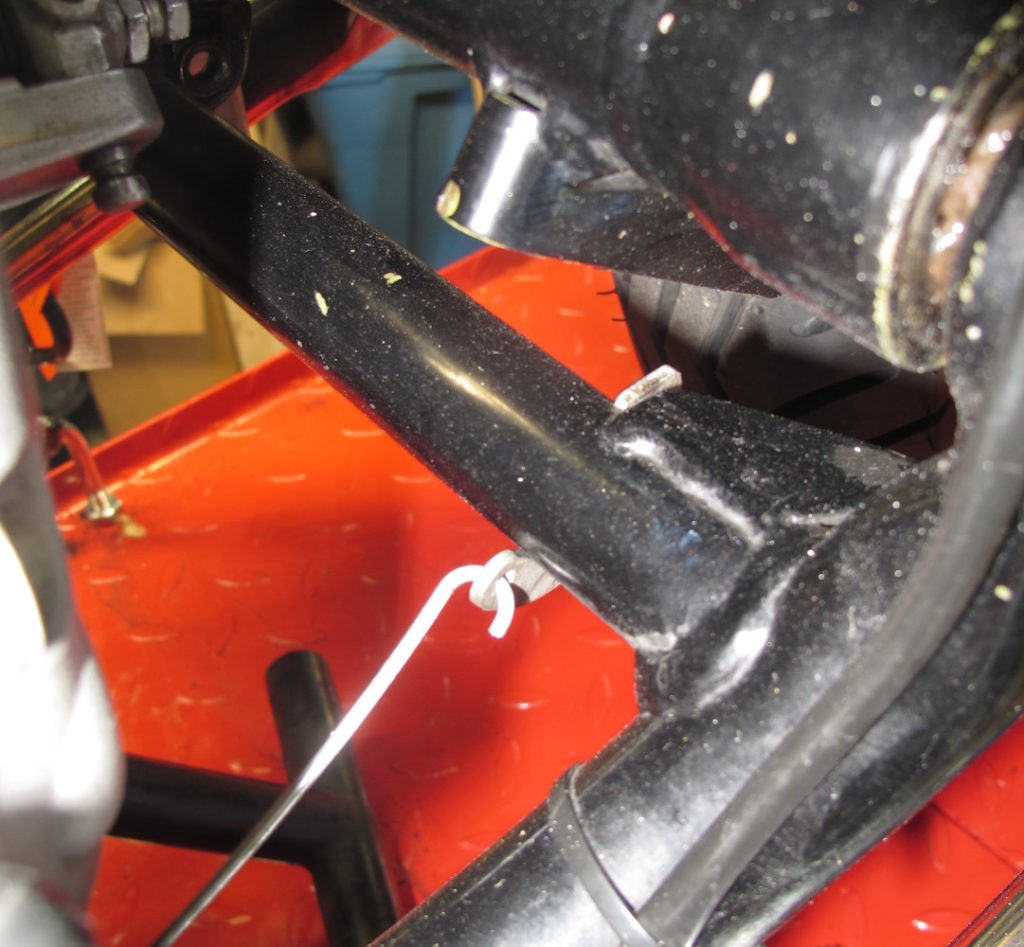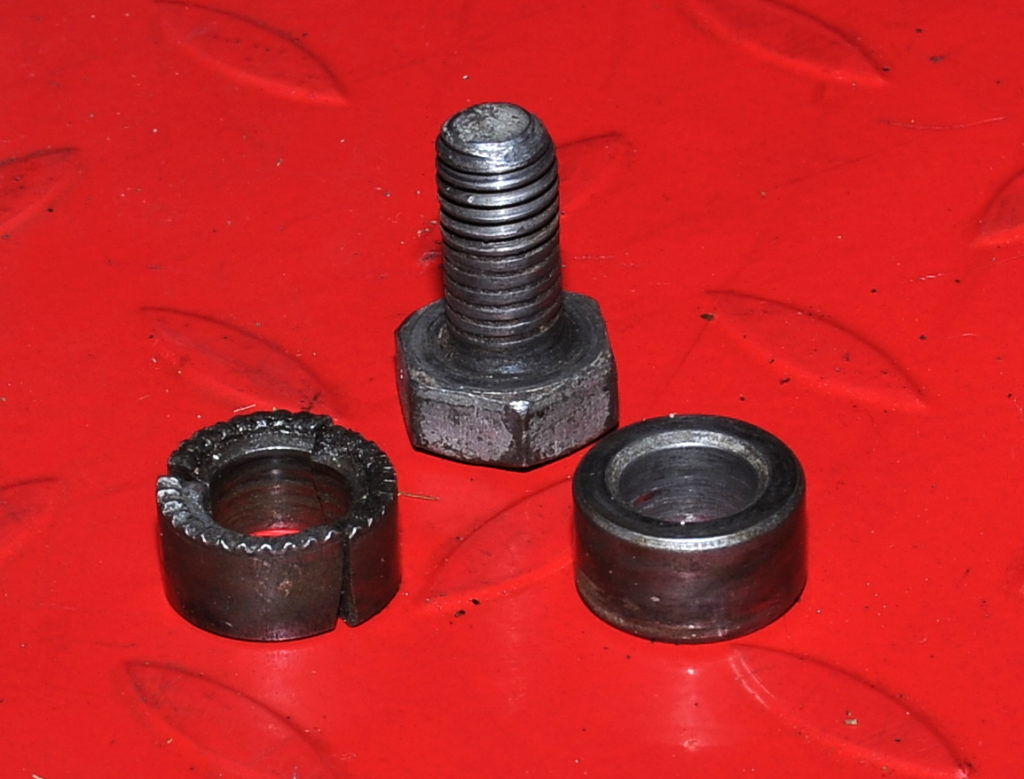On his website, Snobum has a page dedicated to the Reynolds products including the Ride-off stand. It contains a lot of the original catalog info on this particular after-market product. On this page I’ll highlight the technical differences between the two stands.
The Reynolds stand has three features that differentiate it from the factory stand:
- It has a 50% wider stance which should make the bike more resistant to tipping.
- It leaves both wheels in contact with the ground which makes wheel and tire service more difficult.
- The stand automatically retracts when the bike is pushed (or ridden) off the stand. Note: I don’t recommend riding off the stand.
Here’s a picture of the bike resting on the Reynolds stand.
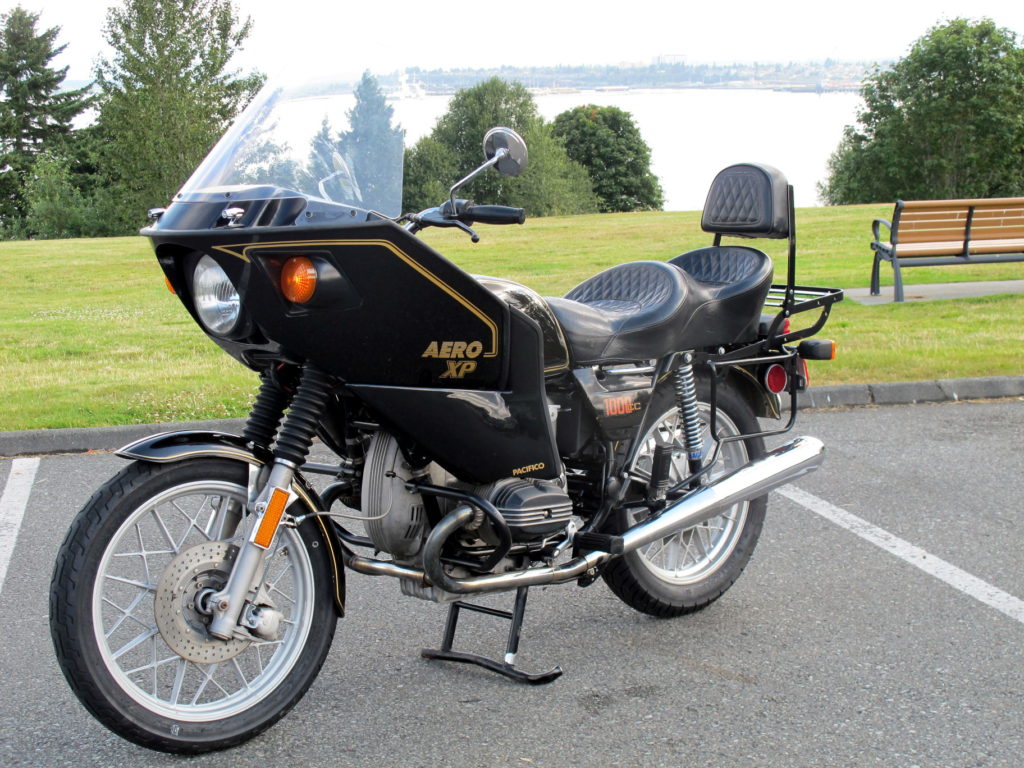
From this next picture you can see just how much wider the Reynolds stance is compared to stock (15″ vs 10″). Further narrowing the factory stand’s stance, the the right foot is turned inwards to provide clearance for the rear brake pedal.
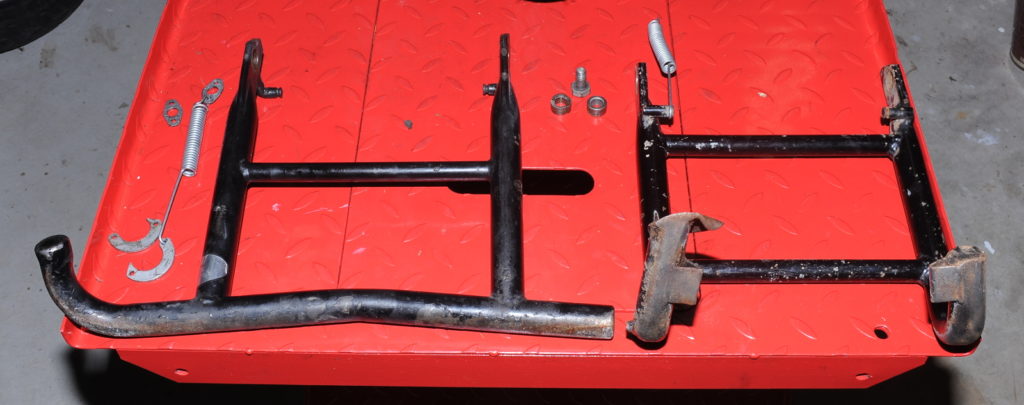 There’s a huge difference in how these two stands are deployed. This has to do with how the springs are configured. The springs for the stock stand run forward. When the stand is retracted the springs are above the pivot bolt, holding the stand in that position. When you press down on the (missing) foot tab, the springs moves below the pivot point, now pulling the stand towards the ground. You then have to stand on the foot pad (not the missing tab) to help lift the bike onto the stand. With this spring arrangement, the stock stand remains deployed even after you push the bike off the stand, so a second step of lifting the stand to its fully retracted position is required before riding. I suspect there’s a possibility that this stand could accidentally deploy if going over a hard enough bump.
There’s a huge difference in how these two stands are deployed. This has to do with how the springs are configured. The springs for the stock stand run forward. When the stand is retracted the springs are above the pivot bolt, holding the stand in that position. When you press down on the (missing) foot tab, the springs moves below the pivot point, now pulling the stand towards the ground. You then have to stand on the foot pad (not the missing tab) to help lift the bike onto the stand. With this spring arrangement, the stock stand remains deployed even after you push the bike off the stand, so a second step of lifting the stand to its fully retracted position is required before riding. I suspect there’s a possibility that this stand could accidentally deploy if going over a hard enough bump.
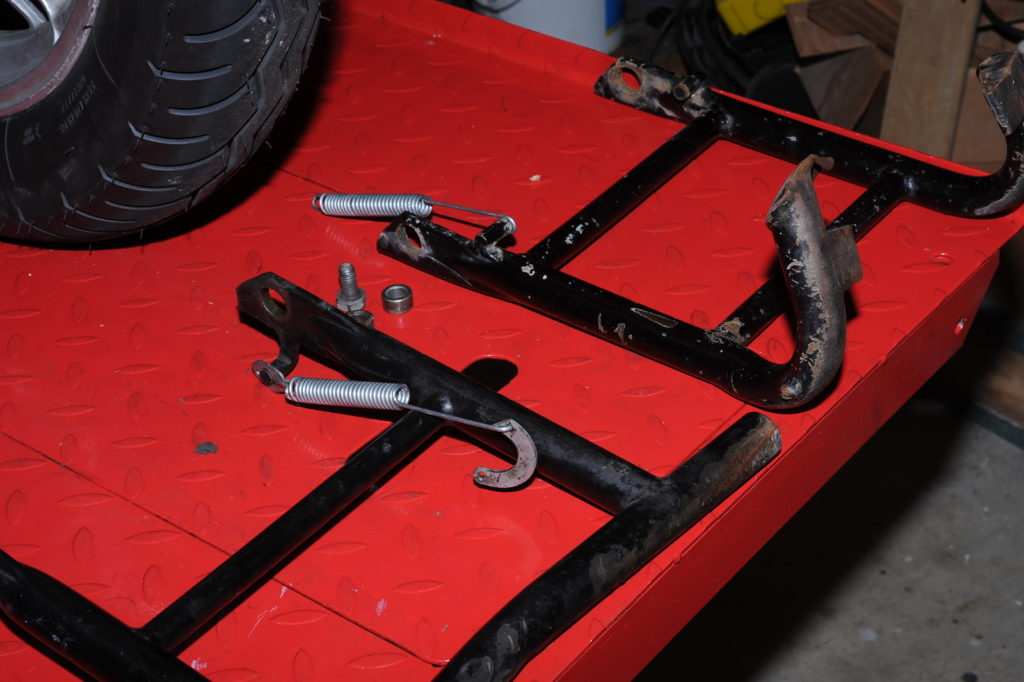 The Reynolds stand springs run towards the back of the bike and clip to the frame’s cross-tube in front of the rear wheel as shown below. There’s not a straight shot, so the springs bend around the rear engine mounts when the center stand is deployed. For this stand, the springs are always trying to retract the stand, so when you push the bike off the stand, you’re done. Deploying the stand is also done in a single step, rather than the two-step process required with the factory stand. There’s no chance that this stand will deploy while riding.
The Reynolds stand springs run towards the back of the bike and clip to the frame’s cross-tube in front of the rear wheel as shown below. There’s not a straight shot, so the springs bend around the rear engine mounts when the center stand is deployed. For this stand, the springs are always trying to retract the stand, so when you push the bike off the stand, you’re done. Deploying the stand is also done in a single step, rather than the two-step process required with the factory stand. There’s no chance that this stand will deploy while riding.
The bushings are similar, but not identical between the two stands. As you can see from what’s left of the Reynolds bushing, it has locking teeth to prevent the bushing from turning when the stand is moved. The dimensions of the two bushings are slightly different. The stock bushing on the right is slightly larger. It has a diameter of 17.95 mm, and a height of 9.75mm. The Reynolds bushing has a diameter of 17.5mm and a height of 9.25mm.
The stock bushing does fit in this particular Reynolds stand with the shim material removed. I don’t know if the shim material is a repair, or was something that Reynolds included. There was also some shim material around the bolt. Given that the bolts were incorrect (and unmatched), I suspect this is a repair.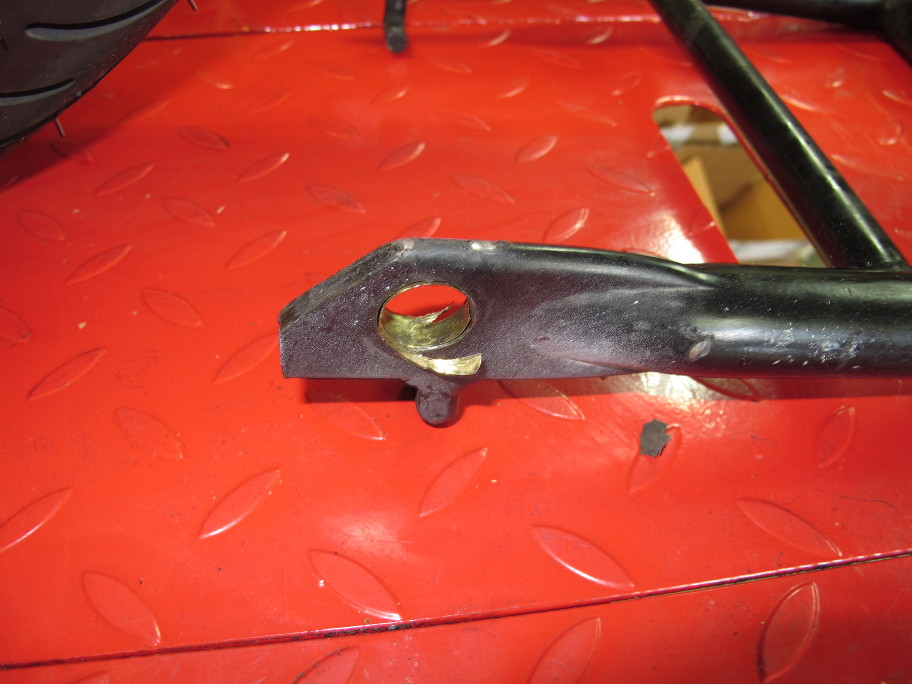
It’s not clear why Reynolds didn’t use the stock bushings. I suspect it might be due to the greater loads anticipated by having people on the bike and trying to “ride off” the stand.

